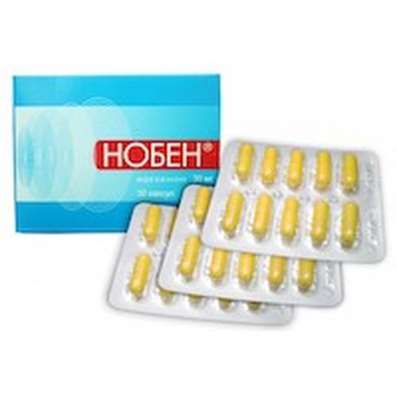Instruction for use: Bacteriophage proteus
I want this, give me price
Trade name of the drug Ė Bacteriophagum proteicum, Bacteriophagum Proteicum liquidum
The Latin name of the substance Bacteriophage proteus
Bacteriophagum proteum (genus. Bacteriophagi protei)
Pharmacological group:
Vaccines, serums, phages and toxoids
Model clinical-pharmacological article 1
Characteristic. Sterile filtrate of the phagolysate of the bacteria Proteus vulgaris and Proteus mirabilis.
Pharmacotherapy. Possesses the ability to specifically lyse Proteus vulgaris and Proteus mirabilis.
Indication. Diseases caused by –roteus vulgaris and –roteus mirabilis: ENT organs (inflammation of the paranasal sinuses, middle ear, sore throat, pharyngitis, laryngitis); Upper and lower respiratory tract (tracheitis, bronchitis, pneumonia, pleurisy); Surgical infections (suppuration of wounds, burn, abscess, phlegmon, furuncle, carbuncle, hydroadenitis, panaritium, paraproctitis, mastitis, bursitis, osteomyelitis); Urogenital infections (urethritis, cystitis, pyelonephritis, colpitis, endometritis, salpingo-oophoritis); Infections of the gastrointestinal tract and bile ducts (gastroenterocolitis, cholecystitis, dysbiosis); Generalized septic diseases; Purulent-inflammatory diseases of newborns (omphalitis, pyoderma, conjunctivitis, gastroenterocolitis, sepsis). Prevention of infections caused by Proteus vulgaris and Proteus mirabilis (treatment of postoperative and freshly infected wounds). Prevention of nosocomial infections due to epidemic indications.
Contraindications. Hypersensitivity.
Dosing. Inside, topically, externally, rectally (in the form of microclysters). In diseases of the gastrointestinal tract, internal organs, dysbacteriosis, the bacteriophage is administered orally 3 times a day on an empty stomach 1 hour before meals and rectally (in microclyster) 1 time per day instead of one ingestion.
The recommended dose of the drug inside (at 1 reception) and rectally (in the form of microclysters), respectively: children 0-6 months - 5 ml and 10 ml, 6-12 months - 10 ml and 20 ml, 1-3 years - 15 ml and 30 Ml, 3-8 years - 20 ml and 40 ml, children older than 8 years and adults - 30 ml and 50 ml.
Locally, externally: in the form of irrigation, lotion and tamponization with a liquid bacteriophage in an amount up to 200 ml, depending on the area of the affected area. With abscesses, the bacteriophage is injected into the cavity of the focus after removal of the pus by puncture. The amount of the drug administered should be somewhat less than the volume of the removed pus. In osteomyelitis after appropriate surgical treatment, a bacteriophage of 10-20 ml is injected into the wound.
In the event that chemical antiseptics were used before the bacteriophage was used to treat wounds, the wound should be thoroughly washed with sterile 0.9% NaCl solution.
Intracavitary injection (including pleural, articular and other limited cavities): inject up to 100 ml of bacteriophage, then leave capillary drainage, through which for a few days the bacteriophage is re-introduced.
With cystitis, pyelonephritis, urethritis is taken inside and if the cavity of the bladder or renal pelvis is drained, the bacteriophage is injected through the cystostomy or nephrostomy 1-2 times a day for 20-50 ml in the bladder and 5-7 ml in the renal Pelvis.
With purulent-inflammatory gynecological diseases, the drug is injected into the vagina or uterus cavity at a dose of 5-10 ml once daily.
With purulent-inflammatory diseases of ENT organs for rinsing, rinsing, instillation, administration of moistened turundum (leaving them for 1 h), the drug is administered in a dose of 2-10 ml 1-3 times a day.
Sepsis, enterocolitis of newborns, including premature infants: a bacteriophage is used in the form of high enemas (through a gas outlet tube or catheter) 2-3 times a day. In the absence of vomiting and regurgitation, the use of the drug inside. In this case, it is mixed with breast milk. A combination of rectal (in enemas) and oral administration of the drug is possible. The course of treatment is 5-15 days. With a recurring course of the disease, repeated courses of treatment are possible. In order to prevent sepsis and enterocolitis with intrauterine infection or the danger of nosocomial infection in newborns, the bacteriophage is used as an enema 2 times a day for 5-7 days.
In the treatment of omphalitides, pyoderma, infected wounds, the drug is applied daily in applications twice a day (the gauze cloth is moistened with a bacteriophage and applied to the umbilical wound or to the affected area of the skin).
Treatment of purulent-inflammatory diseases with localized lesions should be carried out simultaneously both locally and orally for 7-20 days (according to clinical indications).
Side effect. Not described.
Special instructions. The use of a bacteriophage does not exclude the use of other drugs, including. And antibiotics.
An important condition for effective phage therapy is the preliminary determination of phagosensitivity.

 Cart
Cart





